Contributed by Part Time Traveling
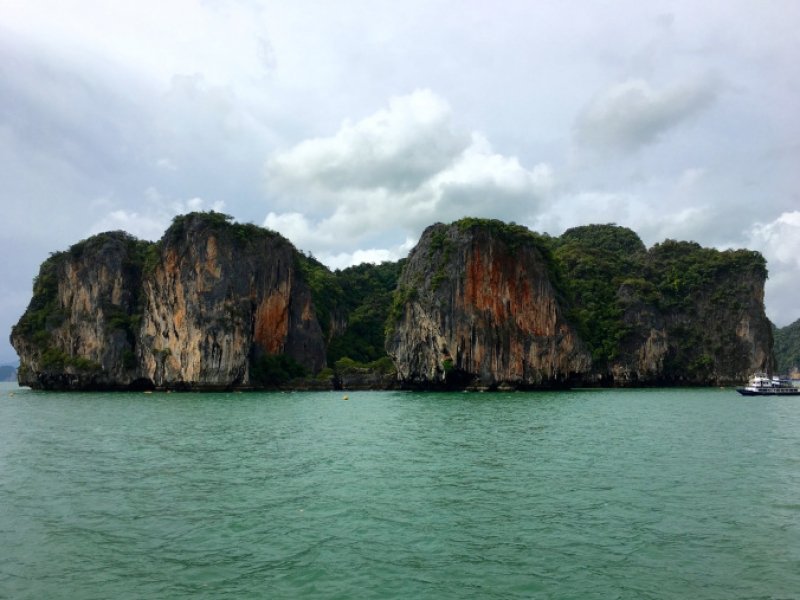
When my husband and I visited Phuket three years ago, like any excited tourist, one of the attractions we did was elephant trekking. Only upon returning back to Singapore did we realise that behind the facade of these majestic wild animals are cruel practices that exploit and abuse them to become docile and obedient. In many cases, elephants are taken from their mothers from young and are subjected to a prolonged period of systematic torture in a process called “Phajaan”, or “breaking the spirit”.
With this knowledge in mind, we decided against animal tourism in our recent trip to Phuket. I’m not saying that all animal tourism in Phuket is harmful; there are sanctuaries that conserve and protect the interests of animals, and you can do your research to source them out.
Journey to Phang Nga Bay
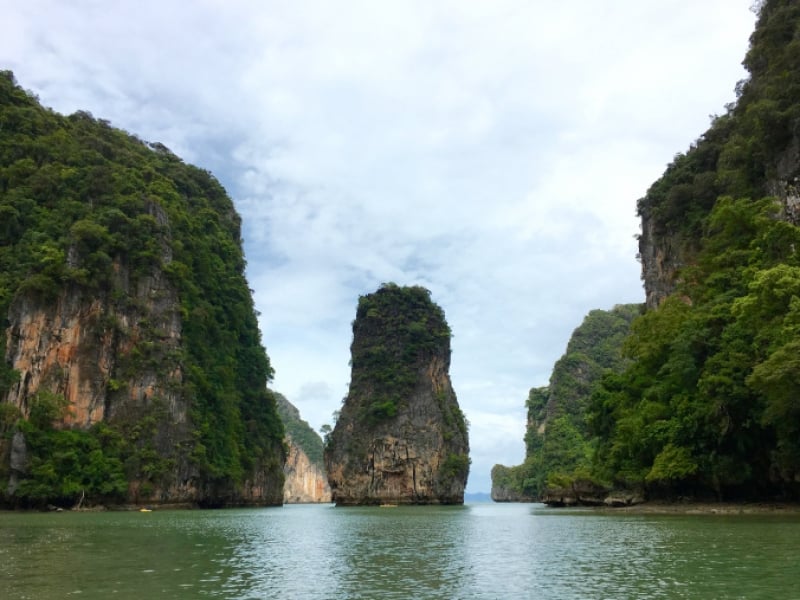
Instead, we chose to spend a day in Phang Nga Bay on John Gray’s Sea Canoe. Phang Nga Bay is easily Phuket’s most fascinating landscape, with a backdrop of towering limestone caves rising out of turquoise waters. It reminds me of the imaginary world of Pandora in Avatar, though more people have compared it to the famous Halong Bay in Vietnam. Bringing you as close to nature as possible, the best way to experience Phang Nga’s incredible scenery is gliding on a canoe while exploring its “Hongs”, which are enclosed lagoons accessible only through narrow sea caves when tides permit.
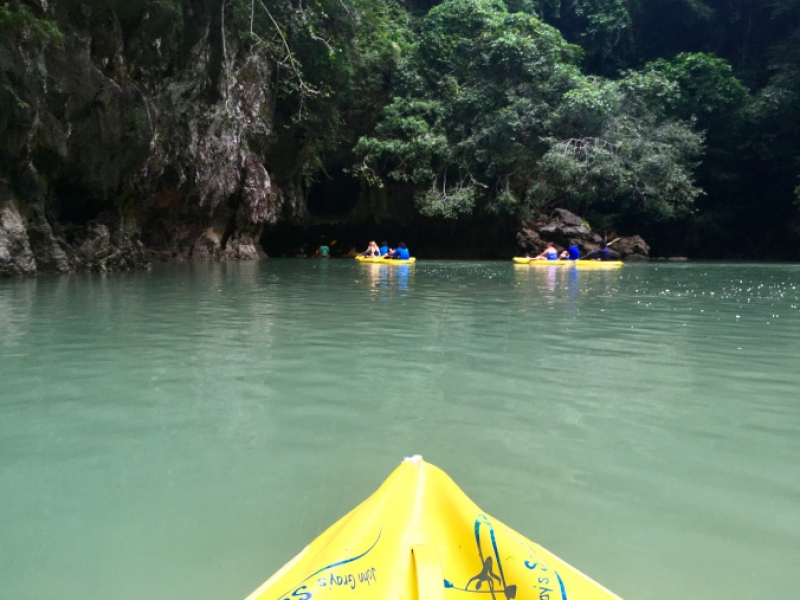
We were first picked up at our hotel in the late morning and driven to a pier on the northeast side of Phuket. Then we boarded John Gray’s Sea Canoe and headed straight to the Bay, while our guide, Faruq, introduced himself and made no delay to serve us lunch. We stuffed our faces with vegetable spring rolls in Thai chilli sauce and stir-fry Hokkien noodles. This was better than the food we had the previous night at our hotel. We were already looking forward to dinner.
Entering the Hongs
“You all lucky, today the sun come out. Yesterday, they have to wear the raincoat!” Faruq said, as the twenty-odd crew prepared the canoes to be released into the water. I tell my husband the Thai gods are in our favour but he looks at me unamused.
We were given a waterproof bag and allocated one captain per canoe. Luckily for Kuang, our captain did the paddling and navigating for us so we did not have to worry about getting lost in open waters, or worse, in the caves. Instead, we could relax on the canoe and marvel at the scenery while snapping away on our cameras.
Kuang told us that there were sea snakes, monkeys and mud crabs in the area and if we were lucky, we could see them. We glided along several limestone cliffs to the “Diamond Cave” which was named due to shiny crystal deposits on its rock formations. The water was shallow and at one point we had to lie flat on our back as the ceiling closed in on us! The rocks that hung from the ceiling were inches away from our faces and I found myself holding my breath as we passed through.
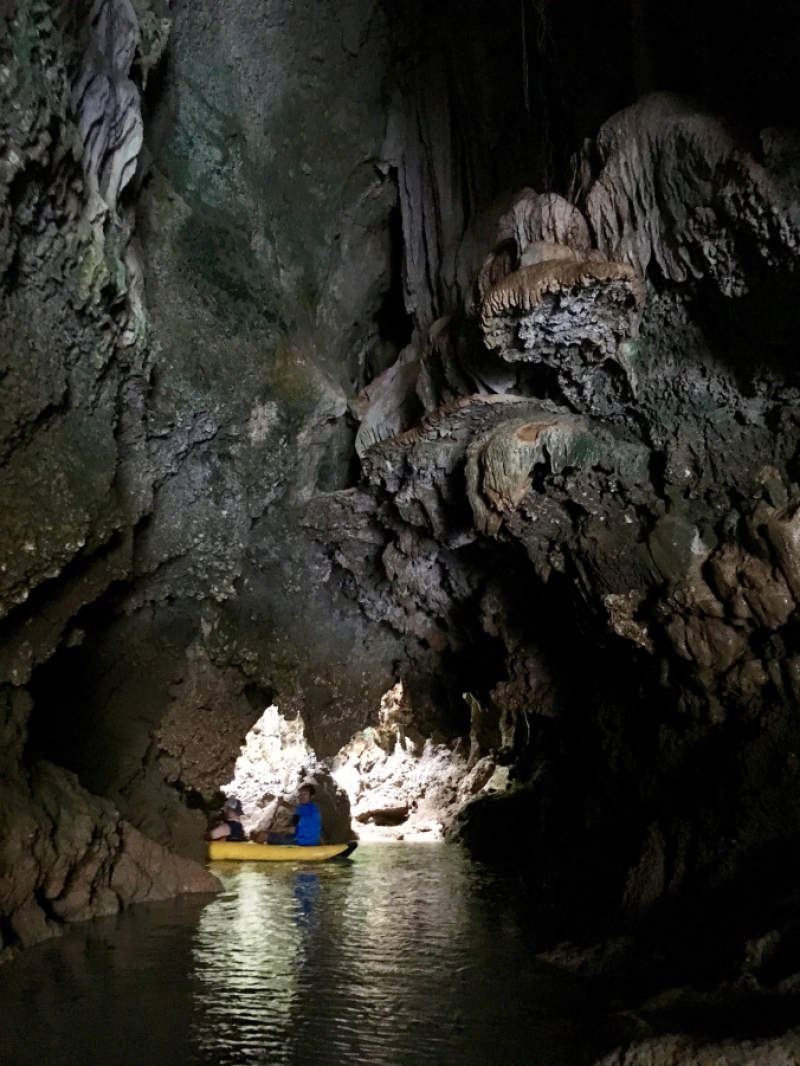
Coming out of the cave, we were greeted by a peaceful lagoon surrounded by a canopy of lush greenery. A mangrove tree with roots exposed stood solitary while the sound of cicadas echoed noisily through the trees. How strange and surreal to be hearing these unusual sounds of nature… the drip drip drip of water instead of the click click click of keyboards.
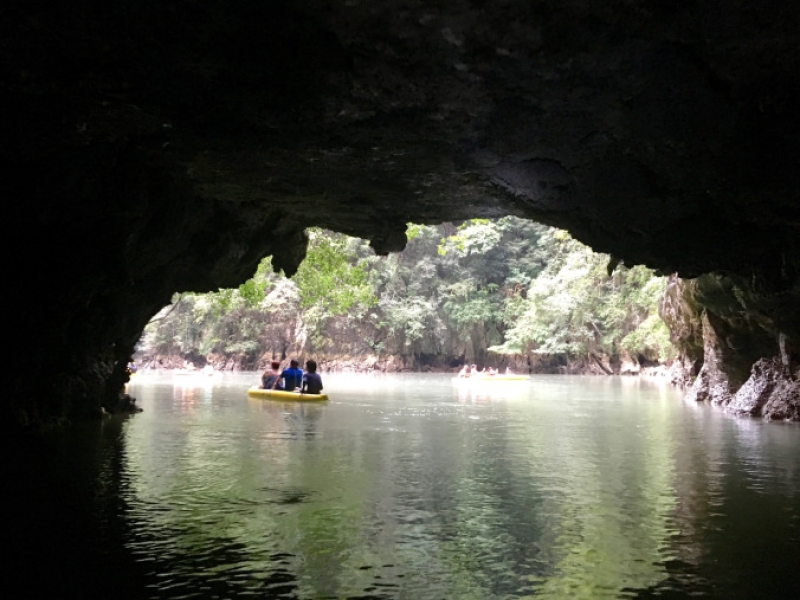
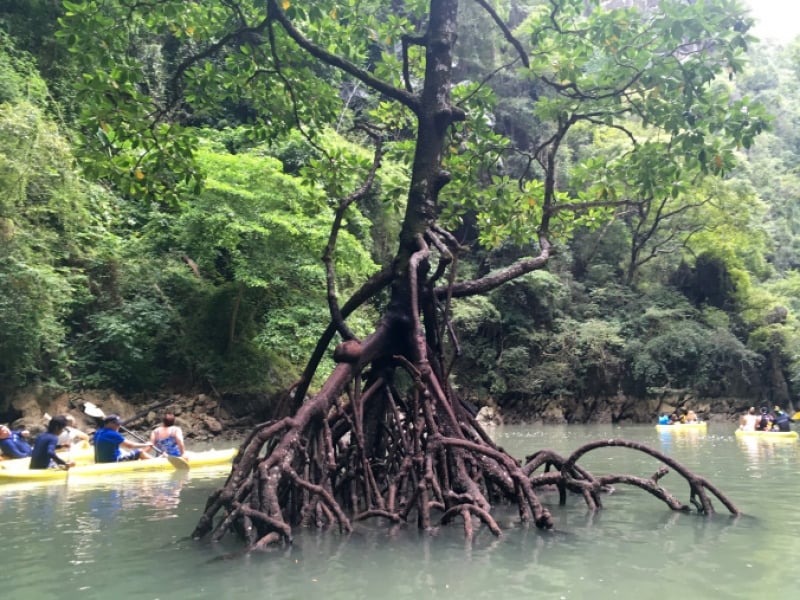
Back on the boat, Kuang taught us how to make a Krathong, meaning “small container”, using banana leaves, banana trunk, orchids and yellow marigold. Look at all our pretty Krathongs!
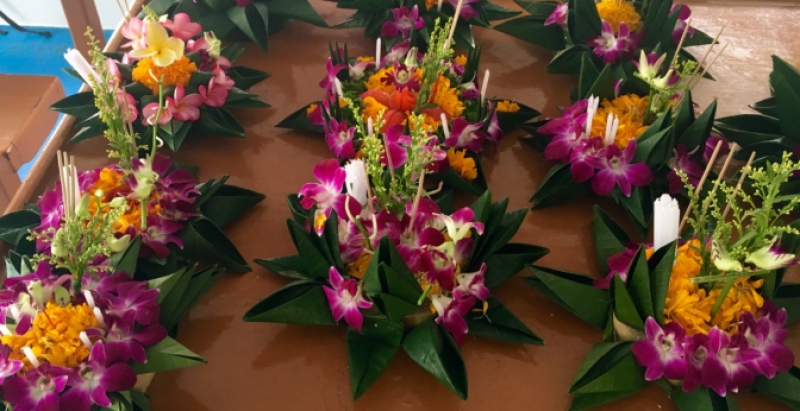
Hong by Starlight
After feasting on a sumptuous dinner while witnessing the sun dip into the sea, we got onto our canoes for one last time into the final cave. We entered the cave in pitch darkness, the only source of light coming from Kuang’s flashlight. At night, the caves do not look so friendly. I had an eerie feeling like watching the start of a horror movie, and my mind was conjuring images of–
“Bats!” I shrieked, realising there were countless of them hanging over us from their feet.
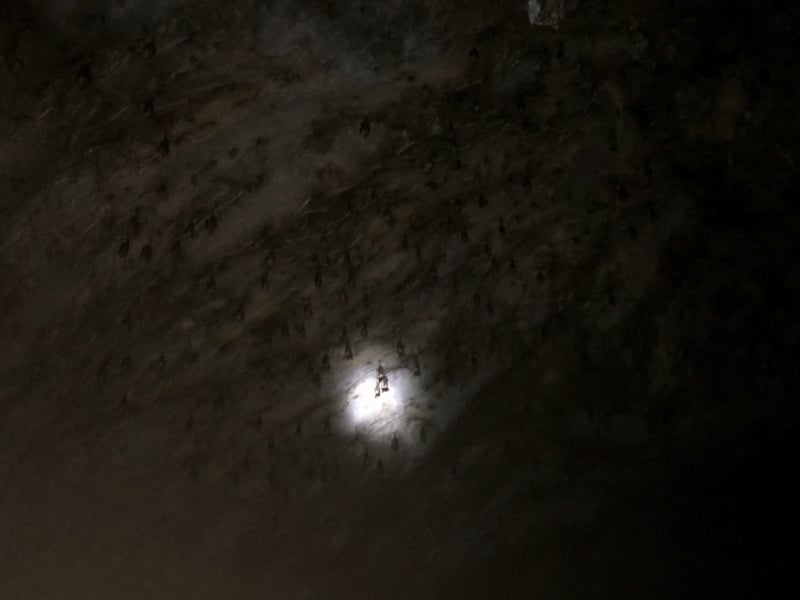
“Don’t open your mouth,” I heard someone say, for good reason. Thankfully they well avoided us.
Once we were out of range of the bats, Kuang lit our Krathong and we set it into the water. This is an annual Thai Buddhist tradition called “Loy Krathong”, where people release lotus shaped rafts, decorated with candles, incense and flowers into the river to pay respects to the goddess of water. They believe that it also helps float bad luck away.
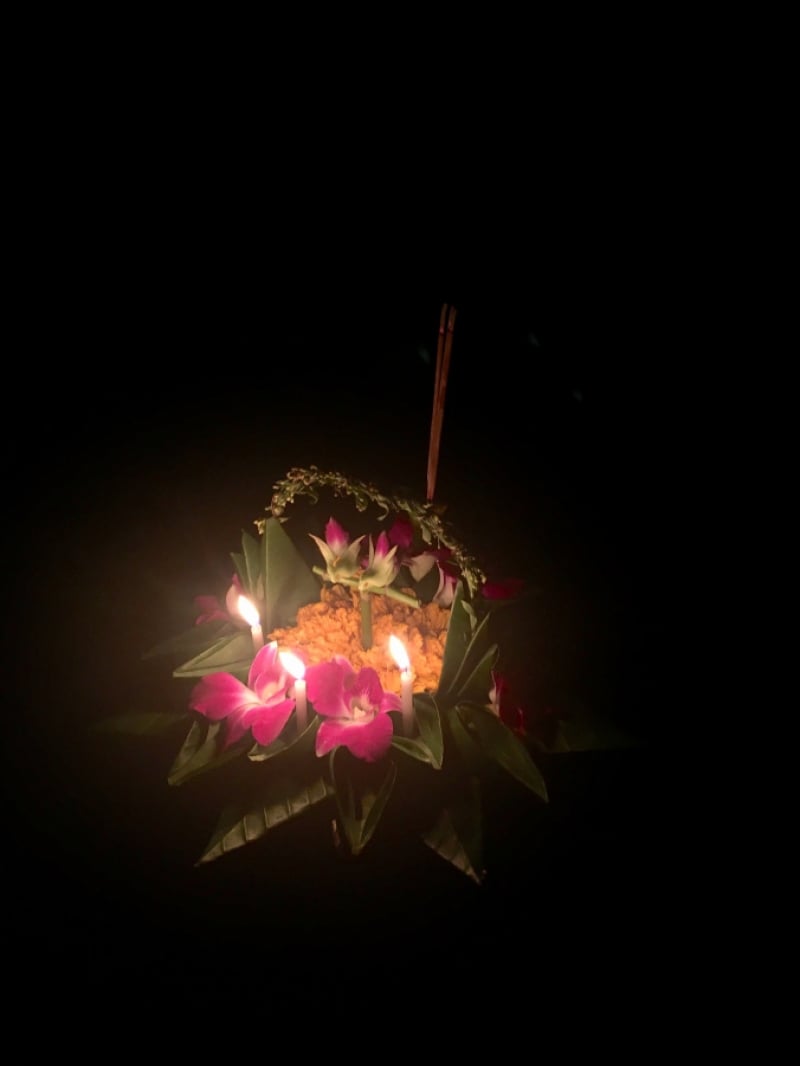
As we were making our way back, Kuang started splashing the water with his paddle, and to our amazement, the water lit up like fireflies in a sea of black! This magical phenomenon of bioluminescent plankton occurs only after sundown and in complete darkness. As we waved our hands through the water vigorously, it glowed and sputtered to life. It was like nothing I have ever seen.
Eco-tourism Done Right
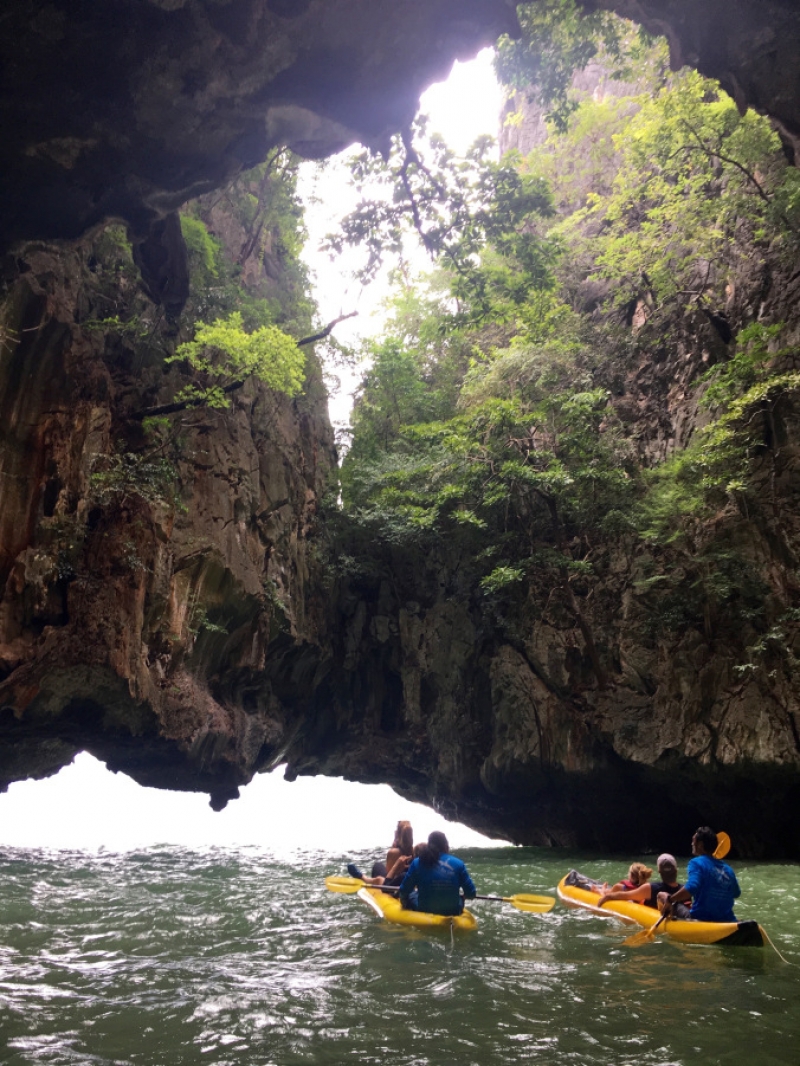
Our day trip to Phang Nga Bay is what I would consider eco-tourism done right. Not only did we get a fuller appreciation of Phang Nga Bay’s marine geology and wildlife, but the crew cares about how we treat nature. We were advised not to touch, talk loudly or feed any animals while exploring the Hongs. As for the Krathongs that were released into the water, we retrieved them back for proper disposal, careful not to leave anything behind.
At the end of the day, we were wet and exhausted, but not disappointed. This was surely way more fun and meaningful than riding on elephants.
Also read: 7 Perfect One-Week Itineraries for Thailand




